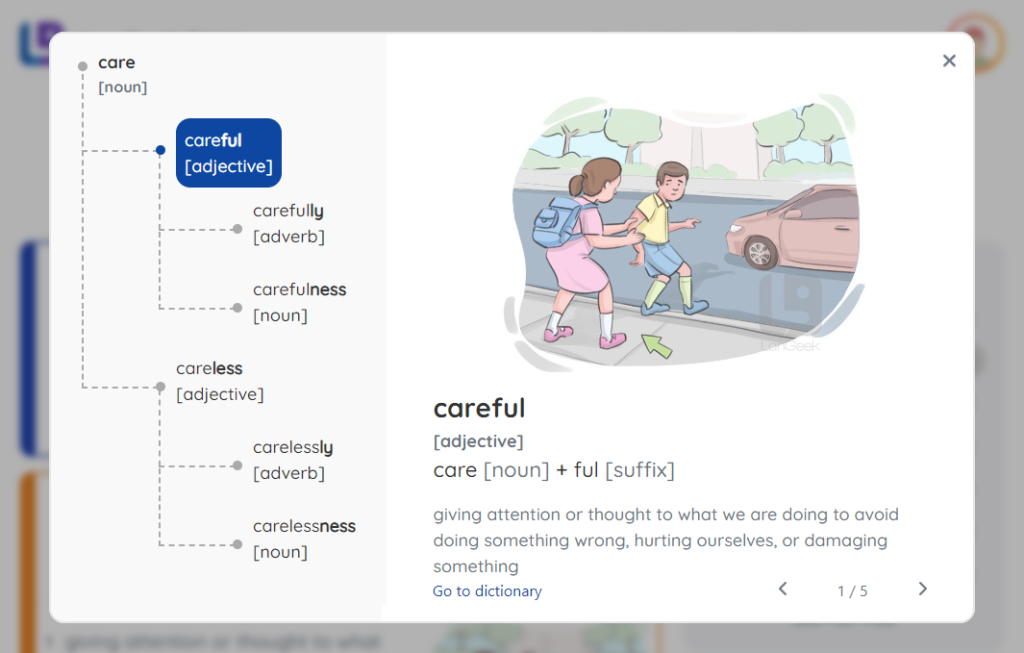When designing LanGeek, our primary concern was to provide learners with an accurate plan for mastering a language. We aimed to create a comprehensive roadmap that covers everything a learner needs to know. To achieve this, we realized the importance of mapping out the morphological connections between words. We wanted to determine how likely learners are to guess the meaning of a word based on its morphological relatives. This motivated us to design a full morphological family tree for each word, capturing not only connections formed through prefixes and suffixes, but also the relationships between compound nouns and the words that constitute them.
One of the unique features of LanGeek is that it creates personalized learning plans for each learner, based on their level, goals, and interests. By using the morphological family tree, LanGeek can identify the words that are most relevant and useful for each learner, and tailor the content and exercises accordingly. For example, if a learner is interested in science, LanGeek can select words that are derived from common scientific roots, such as “bio,” “chem,” or “phys.” This way, the learner can learn not only the individual words, but also the connections between them, and how they form new words by adding prefixes or suffixes. LanGeek also adapts to the learner’s progress and feedback and adjusts the learning plan accordingly.
Morphology can also help learners guess the meaning of unfamiliar words in different contexts, such as reading, listening, speaking, or writing. By knowing the meaning and function of common prefixes and suffixes, learners can infer the meaning of new words that they encounter. For example, if a learner knows that the prefix “un” means “not,” they can guess that “unhappy” means “not happy.” Similarly, if a learner knows that the suffix “able” means “capable of,” they can guess that “readable” means “capable of being read.” LanGeek provides learners with ample opportunities to practice this skill in various contexts, and provides feedback and explanations to help them improve.

Another aspect of morphology that LanGeek covers is the comparison and contrast between the morphological structure of English and other languages. Since English has been influenced by various other languages, such as Latin, German, French, Greek, and more, it has a complex and diverse morphological structure. Learners who speak other languages may find some similarities and differences between their native language and English. For example, Hebrew speakers may notice that some English words share the same root as Hebrew words, such as “shalom” and “salam,” which both mean “peace.” However, they may also encounter some challenges, such as the different word order or the different use of gender markers in English and Hebrew. LanGeek helps learners understand these similarities and differences, and provides tips and strategies to overcome them.
One of the challenges that we faced in developing LanGeek was creating an accurate and comprehensive AI-powered system to map out the morphological connections between words. While there are some existing data sources and algorithms that provide some information on word formation, they are often incomplete or inconsistent. For example, some data sources may not include compound words or their constituent parts, or some algorithms may not account for irregular or exceptional cases of word formation. To overcome these limitations, we have developed our own system that uses multiple sources of data and applies advanced natural language processing techniques to analyze the morphological structure of words. Our system is constantly learning from new data and feedback, and improving its accuracy and coverage.





Add comment